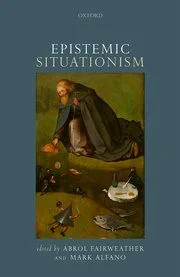Collaborators sought for digital humanities project on the history of philosophy
/You may recall this guest post from last year, in I shared my digital humanities approach to Nietzsche scholarship. If you thought the approach was promising, you might be interested in this opportunity to collaborate. I know about Nietzsche, but I'm not an expert in the vast majority of of figures in the history of philosophy. So I'm teaming up with Marc Cheong (Monash), a computer scientist and philosopher, to crowd-source the semantic-network approach to other figures. Our goal is to create a repository of semantic maps for a large range of philosophers and freely share those maps with anyone who's interested.
Figure: Semantic map of Nietzsche's concept of perspective and related concepts.
This project promises several benefits. First, it will generate attractive and freely sharable teaching materials. Semantic maps are a nice way to introduce students to a new philosopher. Just project a slide of (or print) the semantic map associated with that philosopher, then explain which concepts are central to their work and highlight some of the most important connections between concepts. Second, it will help to diversify the canon. We explicitly seek crowd-sourced expertise on figures from under-represented groups. Making these semantic maps available will, we hope, encourage other researchers to explore the work of philosophers that they might otherwise neglect. Finally (and more narrowly self-interested), anyone who contributes to the crowd-sourcing will be included as a co-author in resulting publications.
If you'd like to contribute, all you need to do is share your expertise with us. We'll take care of all the computer stuff. ;) The process should take at most a few hours. Just follow this link to a spreadsheet where you can enter some information for us. The first five columns are simple but important:
Column A: Put your name here.
Column B: Your university affiliation (so we can find you later).
Column C: Who's the philosopher you're going to help us map?
Column D: In what language did this philosopher write?
Column E: What is the url at http://www.gutenberg.org/ where this philosopher's works are available in the original language? [Note: if Project Gutenberg does not offer anything by this philosopher, you can enter a different url, but we may not be able to use it.]
In the next three columns, we need to rely on your expertise:
Column F: Name, in a word or a (very) short phrase, one of the central concepts explored by your philosopher. Generally, this will be referred to by an abstract noun, such as 'virtue'. For more examples see my guest post at the Daily Nous.
Column G: What is one of the most indicative word stems your philosopher uses to refer to this concept? Because of the vagaries of conjugation and declension, we don't want whole words. For example, we don't want to search for 'virtue', 'virtues', and 'virtuous'. Instead, we search simply for 'virtu*'. The word stem helps us ensure that we don't miss any references. Be sure, though, to provide a stem that is associated with all and only references to the concept of interest. For example, 'virt*' would not be a good stem because it would also pick out 'virtual' and related words.
Column H: What is an appropriate semantic window for your philosopher? For Nietzsche, the numbered paragraph is a natural window. But most philosophers didn't write in that format. In general, we're looking for something that's big enough to ensure that there will be some passages in which multiple concepts are employed but not so big that it's implausible the philosopher associates the concepts. So, the sentence level is probably too short. But the chapter level may be too long (depending on the length of the chapter).
Now you might be thinking, "Wait, is that it? I only need to provide eight pieces of information?" Alas, no. We need you to repeat these steps for each concept that, in your wisdom, you think should be included in the semantic map. This is easier than it sounds. Just go to the next row of the table and enter the relevant information for each concept. For columns A, B, C, D, E, and H, these should be the same every time. The only real work is in columns F and G, where you need to come up with the concept and operationalize it with a word stem. Depending on how into depth you want to go, you might fill in 20 rows, 35 rows, or 50 rows. Fewer than 20 is probably not going to generate a very interesting semantic map. More than 50 is a lot of work and will start to encounter diminishing returns. But you're the expert, so do what you think is appropriate.
One last note: don't overwrite any data submitted by other people! We are sharing this spreadsheet with the confidence that no one will sabotage it. Please don't destroy our faith in the philosophical community.






Mark Alfano. Cambridge University Press (2013).